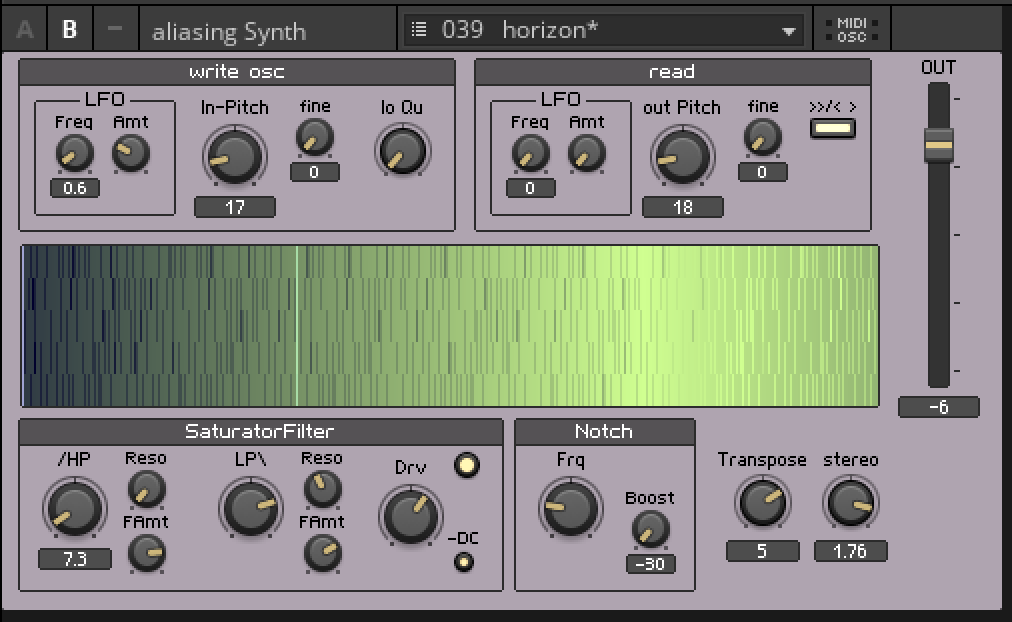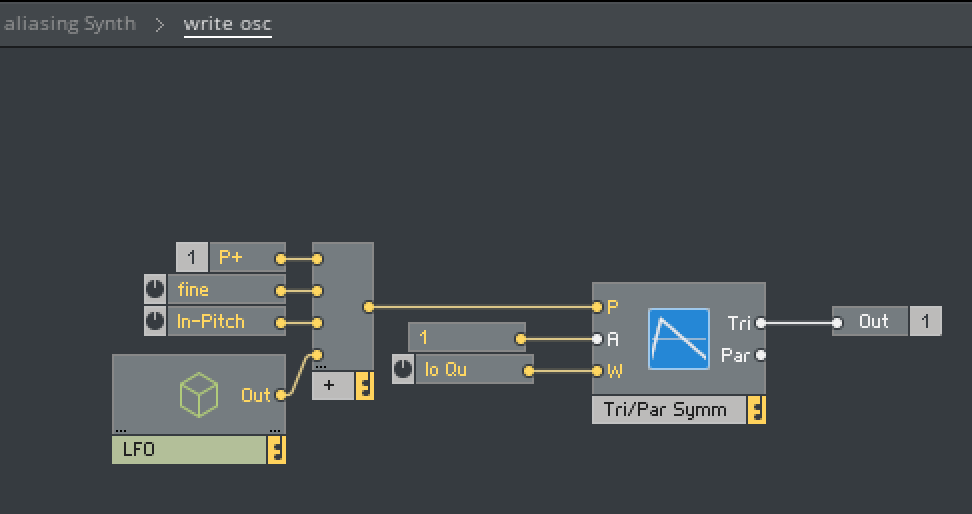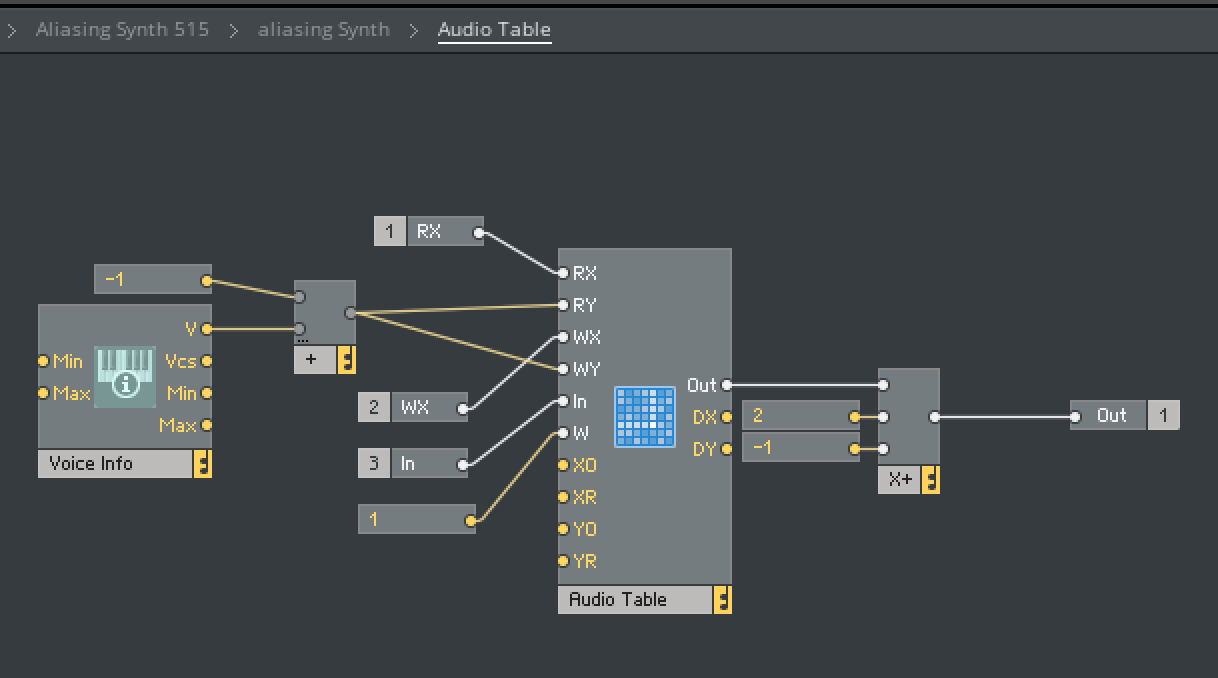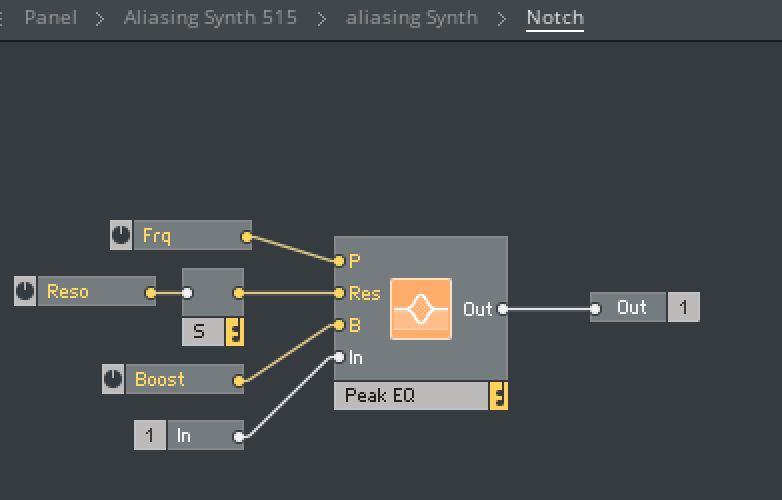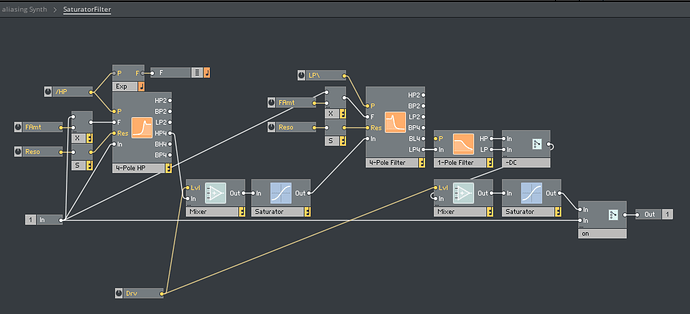Here it is, using localBuf, and restricting it to a size of 1024 like the original reaktor ensemble.
Similarly, i got rid of the separate write signal, and used the readpos both to point the read position and content of the buffer. This would be some sort of feedback, right?
Anyway, the beast sounds much more concise and wicked now. There appear very interesting periodic artiffacts. I suspect this can be refined to a much more controlled state; sadly my knowledge with SC is still very limited, but learning every day with this amazing community!
(
SynthDef.new(\aliasingSynth, {
//Aliasing Synth. Based on a Reaktor Ensemble by Dietrich Pank.
//https://www.native-instruments.com/es/reaktor-community/reaktor-user-library/entry/show/5241/:
//Coded by Santi Vilanova (Playmodes) and Eric Sluyter, with the invaluable help of Thor_Madsen
arg in=0,out=0;
var b, writeSig, writePos, readPos;
var aliased,filteredHP,filteredLP,inputLPfm,inputHPfm,finalsig,writef,readf;
var readratio=\readratio.kr(1!5); //0-5
var readfine=\readfine.kr(0!5); //-0.5 0.5
var writeratio=\writeratio.kr(1!5); //0-5
var writefine=\writefine.kr(0!5); //-0.5 0.5
var transpose=\transpose.kr(0!5); //-2 2
var readlfofreq=\readlfofreq.kr(0.3!5)*12; //normalized input
var writelfofreq=\writelfofreq.kr(0.13!5)*12;
var readlfoamp=\readlfoamp.kr(0!5); //normalized input
var writelfoamp=\writelfoamp.kr(0!5);
var lppitch=\lppitch.kr(120).midicps; //0-130
var lpres=\lpres.kr(0.7);
var hppitch=\hppitch.kr(20).midicps;
var hpres=\hpres.kr(0.7);
var lpfm=\lpfm.kr(1000); //0-3000
var hpfm=\hpfm.kr(0);
var drive=\dbdrive.kr(10); //0-30db
b = LocalBuf.new(1024,5);
//aliasing synth (5 voices)
//writef=SinOsc.kr(writelfofreq,0,writelfoamp)+writeratio+writefine+transpose;
//readf=SinOsc.kr(readlfofreq,0,readlfoamp)+readratio+readfine+transpose;
///////////////just for testing
writef=MouseX.kr(0,5)!5;
readf=MouseY.kr(0,5)!5;
//////////////
writePos = Phasor.ar(0.0, writef, 0.0, BufFrames.kr(b)); //write position header
readPos = Phasor.ar(0.0, readf, 0.0, BufFrames.kr(b)); //read position header
BufWr.ar(readPos, b, writePos); //in the original synth, writeSig=readPos
aliased = Splay.ar(BufRd.ar(5, b, readPos)); //aliasing synthesis result
//filter (stereo)
inputLPfm=aliased*lpfm; //we use the input also as an FM source
inputHPfm=aliased*hpfm;
filteredHP=BHiPass4.ar(aliased,hppitch+inputHPfm,hpres,drive.dbamp).tanh;//LP filter and saturation
filteredLP=BLowPass4.ar(filteredHP,lppitch+aliased,lpres); //HP filtering in series
finalsig=LeakDC.ar(filteredLP,0.995,drive.dbamp).tanh; //final saturation and dc correction
finalsig=Limiter.ar(finalsig*0.1);
Out.ar(out, finalsig);
}).play();
)

